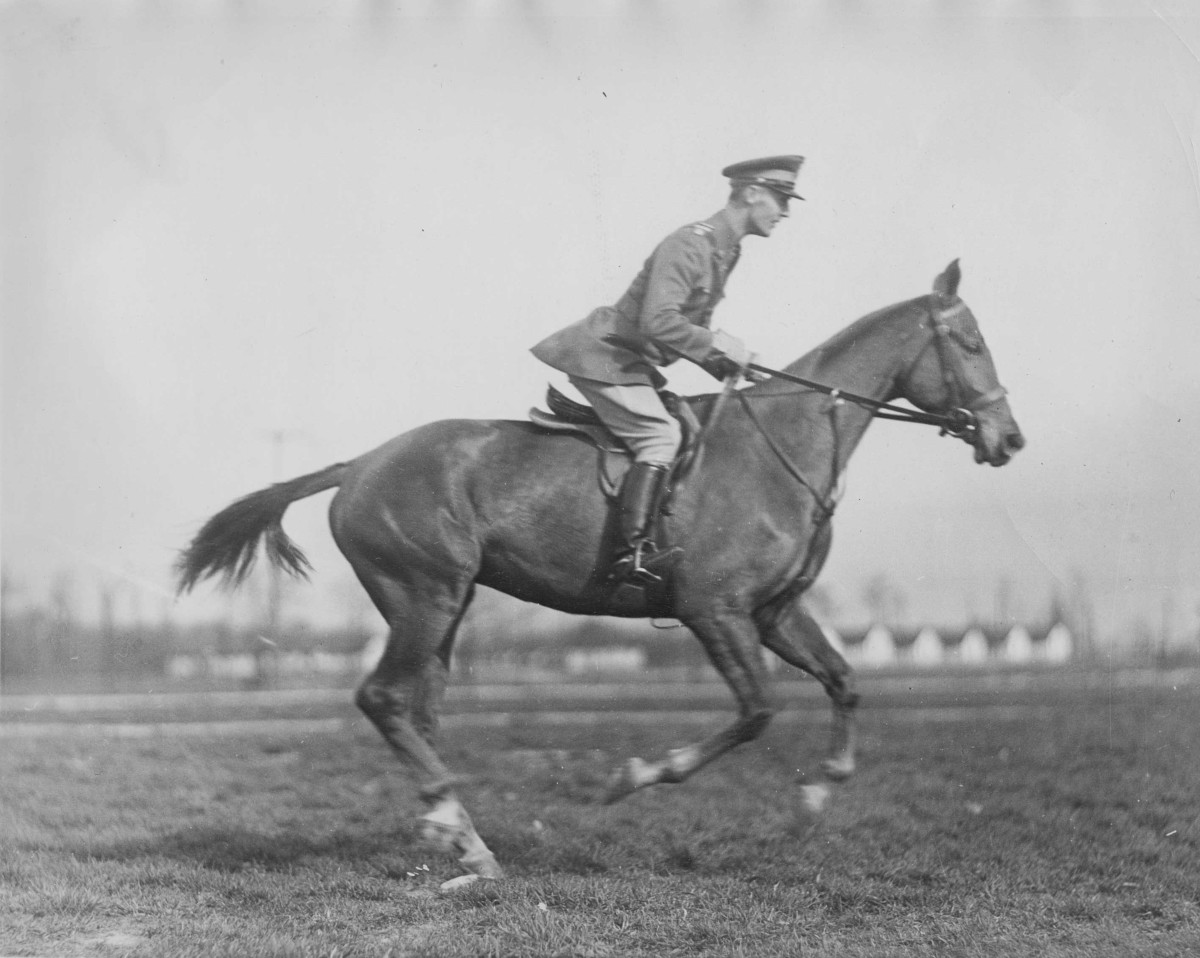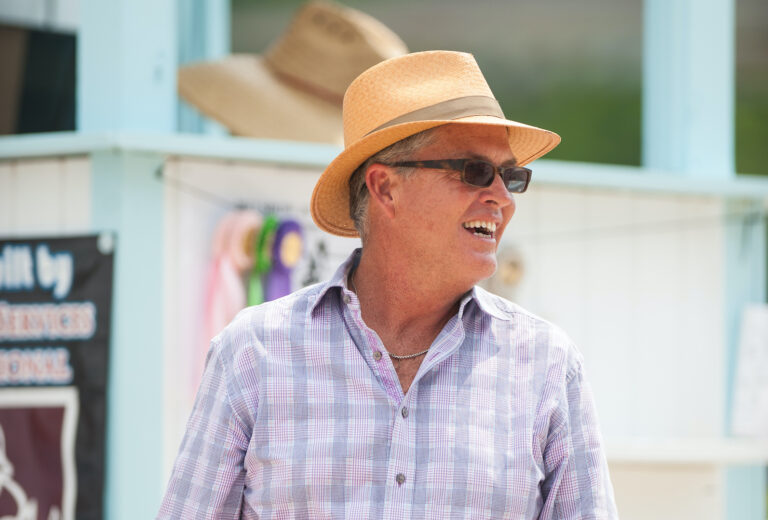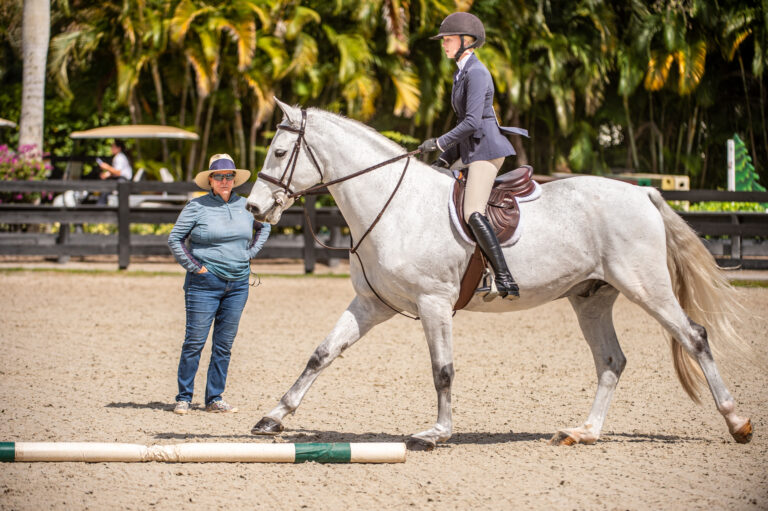The following is an excerpt from the first chapter of “General Chamberlin: America’s Equestrian Genius.” Copyright Warren C. Matha, author and published by Xenophon Press. Available at www.XenophonPress.com.
The Evening Before Major Chamberlin’s Ride
“Late in the evening of Saturday, the 13th of August 1932, the United States Cavalry’s greatest horseman, Major Harry Dwight Chamberlin relaxes quietly and prepares his mind to meet the challenge of tomorrow’s Prix des Nations stadium jumping competition. Tomorrow, he faces the most difficult jumping course in Olympic history.
All of Chamberlin’s years as a horseman, all of his education, all of his training and experience prepare him for tomorrow’s challenge. Tomorrow brings an event of particular significance: He rides in the last event, in the last Olympics of his equestrian career—for Chamberlin privately knows that tomorrow, as the sun sets over the Great Stadium, his Olympic riding career ends forever.
His military superiors require that he retire from international competition. He is 45 years old. His superiors consider him one of the more competent, respected, and well-liked younger officers in the Army. And so, they order him to report to The Army War College in Washington, D.C. immediately after the Olympic Games conclude. Only the Army’s elite study there. With this appointment, Major Chamberlin’s role as rider-captain and trainer of the Army Equestrian Team draws to a close and the door to the Army’s highest commands opens. His new appointment remains a coveted honor for any officer so chosen. But tomorrow’s challenge looms large on his mind, most certainly.

From the day more than 35 years ago that his father Dwight buys him a horse, Chamberlin’s athletic prowess remains well recognized. He is a natural athlete. Twenty-six years ago, he enters West Point where he boxes, swims, and plays football. He runs ninety-five yards on a punt return to set up a winning touchdown against Navy in 1908. This record remains the stuff of legend among the Army’s West Point educated officer corps. Most of all, however, he excels at riding horses. On this August evening of 1932, his accomplishments as a horseman remain the stuff of legend in the US Cavalry and among others who ride and compete in the world of horses.
Only one other officer in the United States Army and very few others in the world equal Chamberlin’s equestrian education and training; no other American and only a few riders internationally equal his range of experience and the height of his accomplishment. Chamberlin rides in childhood. He studies, in depth, all things equine at West Point. He then graduates first in his class from the basic and the advanced horsemanship courses at Fort Riley’s Mounted Service School. Later, shortly after the Great War in which he serves near Verdun and in the Meuse-Argonne Offensive, he returns to his passion: horses.
As the US Army’s official observer, he analyzes the riding and training methods of the French at Saumur, the Germans at Hannover, the Belgians at Ypres, and the British at Weedon. He studies. He evaluates. He synthesizes the riding, teaching, and training methods of each school. French lightness and German precision appeal to him.
Later still, as a “distinguished” graduate of Saumur, he understands and applies French dressage expertly. As a “distinguished” graduate of Tor di Quinto, he masters Italian forward riding. In every field of horsemanship, he proves himself a star student of rare athletic ability. On graduation day eight years ago at the Italian Cavalry’s advanced school at Tor di Qunito, the school’s Commandant takes Chamberlin’s hand, presents a diploma, and says: “The pupil has surpassed his master.”
Not only does he excel at equestrian academics and apply such concepts with a mastery that few others attain, Chamberlin develops his own theories of horsemanship. His “Chamberlin seat” modifies the Italian forward method to render the rider more secure and more precise with the aids. He applies French dressage to train jumpers and cavalry mounts, something the Italian theorists and many others refuse to do.
Ultimately, Chamberlin synthesizes and then transcends the equestrian theories of France, Germany, Italy, and the United States to create a mode of riding and training that elevates the US Cavalry’s horsemanship to its highest plain and, in the future, will influence Olympic riders throughout the world well into the twenty-first century. When one considers his career, one considers a genius not only in the development of theory but in its application as well.
So what might Chamberlin be thinking this night before his last Olympic ride? Certainly, he might reflect on the great victory won earlier today: The Chamberlin led and Chamberlin trained Three-Day Event team wins the Team Gold Medal for The Three-Day Event, the first Olympic Gold Medal ever won by an American equestrian team. The Americans dominate the event as they ride in the Chamberlin style on horses trained in the Chamberlin fashion. For the first time in Olympic history, a team other than one from Sweden or Holland wins the Team Gold Medal in Eventing. The American victory breaks the European lock on the sport.
Perhaps Chamberlin, on this night, thinks back on his many other experiences over the years. Only a few horsemen in the world come close to the wide range of his experience: In 1912, he rides with the 7th Cavalry in the Philippines where heat prostration causes cavalrymen to fall from their saddles. In 1916, he rides with the 5th Cavalry over 1,000 miles round-trip through Mexico under war-time conditions, over the most difficult terrain on earth, where temperatures soar to 120 degrees by day and canteens freeze solid at night. In 1919, at the Inter-Allied “Pershing” Games, he impresses all as a Prix des Nations and a Three-Day Event rider. In 1920, in the Olympics at Antwerp, he participates in all three equestrian disciplines: Dressage, the Three-Day Event, and the Prix des Nations.
In 1925 and 1926, he captains and trains the 8 Cavalry polo team. Chamberlin and his team win the national polo championship in both years (an Army first) and he achieves a three-goal (professional) handicap. In 1928, in the Olympics at Amsterdam, he competes in the Prix des Nations, where he comes under the eye of the President of the American Olympic Committee, Major General Douglas MacArthur (whose support proves crucial for the Olympics of 1932). Throughout the 1920s and into 1931, on his horses Nigra, Tanbark, Huron Girl, and Gary Owen, he defeats the finest horseman of Germany, Ireland, Poland, Holland, France and Britain in successive international show jumping competitions in America and in Europe. Chamberlin’s jumping style proves so spectacular that Vladimir Littauer at the time tells his students: “… don’t bother to try to go over obstacles the way Major Chamberlin does, because you will never be able to do it anyway …”
Perhaps this evening before his last Olympic ride, Chamberlin reflects on just a few of his past victories: In 1928, at Madison Square Garden, out of eighteen riders who compete from the United States, Poland, Holland, Germany, Belgium, and Canada, only Chamberlin jumps a clean round. In 1929, to win the Challenge Cup against horsemen from Italy, Ireland, Poland, and Germany, he rides Gary Owen and wins the hunter class by achieving a flawless, clean round in record time. In 1930, at the Boston Horse Show, in a long drawn out battle between Chamberlin on Huron Girl and the German Army’s Lt. Ernst Hasse on the gelding Elan, each rides a clean round. The judges raise and widen the jumps. After two jump-offs, each with higher and wider jumps, both riders and horses achieve clean rounds; in the third jump off, over still higher and wider jumps, Chamberlin and Huron Girl make it clear with no faults. Hass and Elan falter and topple a bar to the ground. Chamberlin wins the Millwood Hunt Challenge Trophy. In 1931, against some of the finest military horseman in the world, he wins the International Military Trophy at Madison Square Garden in what the New York Times describes as “one of the most exciting performances in the history of the National Horse Show to date, Major Chamberlin on Tan Bark wins the International Military Stakes.”
Perhaps this evening Chamberlin thinks of the many officers who mentor him, support him, and contribute to this success. Chamberlin’s superior officers—especially General Guy V. Henry, Jr., the Chief of Cavalry and General Douglas MacArthur, the Army Chief of Staff and Olympics enthusiast—in unprecedented fashion, put all of the resources of the United States Army behind Chamberlin and his team. MacArthur authorizes General Henry to support the team to the fullest extent possible. MacArthur delivers the entire resources of the Army: Officers all over the country search for talented horses. The Army Corps of Engineers constructs special facilities around the country that include jumping courses that Chamberlin designs.
General Henry sponsors events across the country to qualify riders with the most potential for success. Never before and never again will the Army devote so much time, effort, personnel, construction resources, and money to such an endeavor. A year before the start of the Games, Chamberlin and his team work six days a week with only occasional breaks to prepare for the Olympics of 1932.
Chamberlin’s traits as a leader prove perfect for the task. He recognizes a fact far too often neglected in the “brown-shoe US Army.” He understands the difference between “command” and “leadership.” In the Army of that day, many officers “teach” with insults, intimidation, fear, accusation and abuse. Chamberlin in his role as teacher offers praise. He forgives and encourages. He expects the highest standards of his charges. If a subordinate fails to meet his high expectations, Chamberlin goes out of his way to find a position for that man better suited to the man’s abilities. From the time he first leads and trains cavalrymen as a Second Lieutenant until now as Captain of the Army’s Equestrian Team, he builds the strongest organizations and inspires the greatest loyalty, friendship, and enthusiasm.
Perhaps Chamberlin thinks about those who will witness his team’s performance a few hours from now. Tomorrow, so many luminaries will watch and cheer the American team on: Charles Curtis, the Vice President of the United States; Jim Thorpe, against whom Chamberlin played football; General Guy Henry, his old West Point horsemanship instructor, mentor, and now Chief of Cavalry; everyone who is anyone in the horse world plus the elite of Hollywood; the millionaires of New York, Boston, Chicago, and Washington; and many others from the major cities of Europe as well.
Perhaps he thinks of the 100,000 or more other spectators who will fill the stands tomorrow and of his many friends and his superiors at posts all over the United States who will listen by radio once the radio blackout lifts including MacArthur, Patton, Swift, and Truscott.
Perhaps he thinks of his horse Tanbark, his splendid brown Thoroughbred gelding, at 15.3 hands, supremely athletic, intelligent, courageous, well experienced, and a jumper of immense scope and power. Of all the horses that Chamberlin rides over the years—Nigra, Gary Owen, Huron Girl, High Hat, and Tanbark, Tanbark proves best able to negotiate the difficult jumps that tomorrow presents.
So far, we have speculated about Chamberlin’s thoughts. We know three things for certain: One, his prized jumper Tanbark rests lame in his stall. Two, Chamberlin knows that he must ride over a jumping course that he has not seen before—on a substitute horse on which he has not competed before. Some say that he has never jumped the horse before. And three, he knows that tomorrow presents his last chance to win the crowning glory of his equestrian career: The Gold Medal in the Prix des Nations stadium jumping competition, the last and the most dramatic event of the Olympic Games.
And so, on this Saturday evening, Major Chamberlin makes ready for his last Olympic ride.”
Xenophon Press has embarked on a mission to reveal to modern riders the legacy and the life of Brigadier General Harry D. Chamberlin, America’s foremost equestrian theorist. James Wofford ranks him “second only to Caprilli in international influence” and writes: “Chamberlin is to horsemanship as Mozart is to music.” Chamberlin’s concepts for training horses and riders together with his “Chamberlin Seat” have spread throughout the show jumping and the eventing worlds with minor modifications country by county.
Last year, Xenophon released a new edition of Chamberlin’s “Training Hunters, Jumper, and Hacks” [Xenophon Press 2019] and earlier this year, his “Riding and Schooling Horses” [Xenophon Press 2020]. Each new edition offers an introduction by Chamberlin biographer Warren Matha. Recently, Xenophon released for sale a definitive biography of the general titled “General Chamberlin: America’s Equestrian Genius” by Warren C. Matha. [Xenophon 2020]. Filled with equestrian insights, the biography details Chamberlin’s career as well as the story of his equestrian education at West Point, Ft. Riley, Saumur, and Tor di Quinto and of his contributions to horsemanship.
Soon, Xenophon will release “The Chamberlin Reader: The Education and Writings of General Harry D. Chamberlin” compiled and edited also by Warren C. Matha. “The Chamberlin Reader” will introduce to modern readers difficult to find articles and monographs that Chamberlin wrote on horsemanship, texts that Chamberlin studied at the Cavalry’s Mounted Service School, as well as a rare booklet published by the French Cavalry School at Saumur when Chamberlin studied there. “The Chamberlin Reader“ also will present the US Cavalry’s protocol for long distance riding together with 150 photos, many never before published of Saumur, Tor di Quinto, The Games of 1919, and the Olympics of 1932. “The Chamberlin Reader” aims to present an equestrian education as experienced by “America’s greatest horseman.”
As an Amazon Associate, Practical Horseman may earn an affiliate commission when you buy through links on our site. Product links are selected by Practical Horseman editors.
To purchase Warren C. Matha’s “General Chamberlin: America’s Equestrian Genius,” visit Xenophon Press or Amazon.










